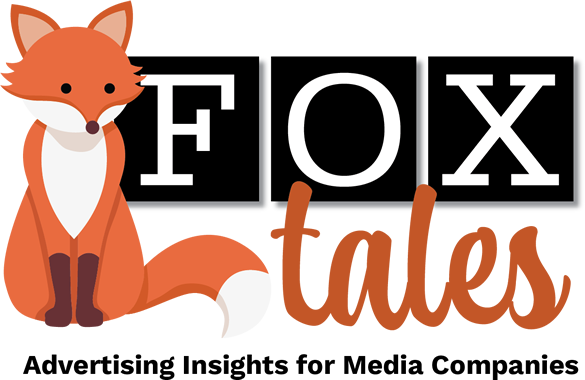At the Niche Media Leadership Summit last fall, we were pleased to connect with Al Rickard, president of Association Vision, a firm dedicated to assisting associations with communications strategies ranging from public relations and publishing to marketing.

Al Rickard.
Like us at Fox Associates, Al was impressed by the conference’s keynote speaker, Don Harkey, CEO at People Centric Consulting Group. So when Al suggested an Association Vision/Fox Associates collaboration on an interview with Don, we thought it was a terrific idea. What follows is an article bylined by Don, but the outcome of a series of questions Al developed and we approved. This article will appear in the March issue of Door Security + Safety Magazine, which is an Association Vision client.
By Don Harkey
Organizational leaders have been spoiled for many years. The job market has favored the employer for most of our lifetimes as there have always been more than enough workers for open job positions.
However, due to low birth rates in the United States, that changed around 2018. Today, there are not enough workers available to fill all the open job positions, leaving many employers shorthanded.

Don Harkey.
The COVID-19 pandemic created the illusion that this shortage was a result of shutdowns and the work-from-home trend, but this is a broader trend that will continue to impact our country through the rest of this decade and beyond. The result is that the employees have more power than ever and they are starting to exercise this power. Employees are demanding more pay, more benefits, and most importantly, more flexibility in their jobs.
Compounding this issue is the simultaneous retirement of the Baby Boomer generation. This year, Generation Z employees began to outnumber Baby Boomers in the workplace. At the same time, Millennials are being thrust into executive positions due to the relatively low numbers of Generation X workers. The average Baby Boomer will be succeeded by a Millennial who has more than 20 years less experience and knowledge.
The result is a perfect storm causing a labor shortage coupled with a dramatic decrease in general expertise and experience. We are already seeing a drop in product quality and simple “know how.” While Generation Z and Millennials are taking the brunt of the blame for their “poor work ethic” and “entitlement,” the Boomer generation hasn’t helped, because they tend to hoard knowledge and are slow to delegate, slowing the knowledge and experience transfer.
The perfect storm is making it critical for employers to act strategically and immediately to protect their future because those that don’t simply won’t survive the storm. Employers need to start by improving their work environments. The competition for labor is fierce, but not everyone is struggling to find talent. Companies and organizations that have spent time creating strong cultures and terrific work environments are able to attract talent from other organizations and thrive in the storm.
The other action employers must take is to find ways to transfer knowledge and experience from their Boomers to the younger generation. Expertise is quickly becoming rare, making it a competitive advantage.
If you aren’t already working on these things, you are already behind. The storm is here.
Five Mistakes Employers Make
Many employers make critical mistakes in recruiting and working with Millennials and Generation Z employees. Try to avoid these mistakes:
- Badmouthing Younger Generations—Boomers love to talk about the problems with the Millennials and Generation Z and it’s just not helpful. They hear you and they tell their friends who are thinking about applying for jobs with your company. Most potential applicants talk to someone who already works at your company before they apply. If they hear “Boomer culture,” you’ll never see their application.
- Not Delegating—We need to give more challenges to Millennials and Generation Z to solve. Too many older managers don’t trust their younger employees so they don’t give them problems to solve. If you want to earn engagement from younger generations, start by engaging them.
- Not Training Employees—We need to train our younger generation of workers on how to lead and motivate people. We also need to train them with business skills such as understanding financials. It’s also important to recognize that older employees may not know how to do these things right either.
- Lack of Flexibility—Where possible, offer some flexibility with your employees. Flexible start/stop times are highly valued. Strongly consider employing an open time-off policy where you don’t track personal time off (PTO). This flexibility must come with strong management and accountability, or it will just create entitlement.
- Valuing Effort Over Results—Boomers love to hang out in the break room bragging about how many years of PTO they’ve accrued or how late they worked the day before. Millennials and Generation Z employees don’t value hard work—they value the result. Many are good at leveraging technology to crank out a lot of work in a short amount of time. Focus on the work output, not the time. Don’t coddle them, however. Make sure they know what high quality work really means.
Highlight Your Values
If qualified potential employees are not applying for positions at your company, consider whether you are effectively communicating company values.
Start by enhancing your website. Nearly 80% of potential applicants look at your website before applying. They want to know what it’s like to work for your company and learn more about your values. If you say nothing about this on your website, you are losing a lot of applicants. There are lots of employers who quietly are having no trouble finding applicants.
Build Continuous Feedback Loops
Develop a performance management system that teaches managers and supervisors to practice continuous accountability and conduct periodic “check-ins.” When something good or bad happens, the manager should say something to the employee as soon as possible so the employee connects their behavior to the outcome. Check-ins are regular meetings (monthly or quarterly), where the supervisor meets with each employee one-to-one to find out how they are doing. This is open space for the employee to talk about what is working or not working in their job, how they want to develop into the future, and helps build the relationship between the employee and the employer. A vast majority of engaged employees feel like their supervisors care about them as a person.
Develop Training Programs
Effective training programs are deliberate training programs. Frankly, most companies aren’t very good at this. The training is “on the job,” meaning employees are asked to just shadow people who may or may not be good at training people. Good training programs are designed and deliberate and utilize adult learning theory (how adults learn). Adult learning theory says that adults learn best when their training is practical, relatable, and they have some choice in how they learn. This also requires clear job descriptions and expectations.
Share Information
How can employers capture the knowledge that retiring baby boomers have and keep some of them engaged at some level even in retirement to benefit current employees?
To be honest, many Boomers aren’t good at passing on information. They don’t have a lot of respect or patience for younger generations or they just find that it’s easier to do the job themselves.
A few Boomers are afraid of becoming obsolete if they train younger generations. Start by acknowledging these barriers from the Boomers’ perspective and dealing with these. Once these barriers are addressed, you can develop best practices such as capturing standard processes, training, and mentor programs.
Don Harkey is the CEO and Founder of People Centric Consulting Group in Springfield, Missouri. Email: donharkey@peoplecentric.com. Website: www.peoplecentric.com.
